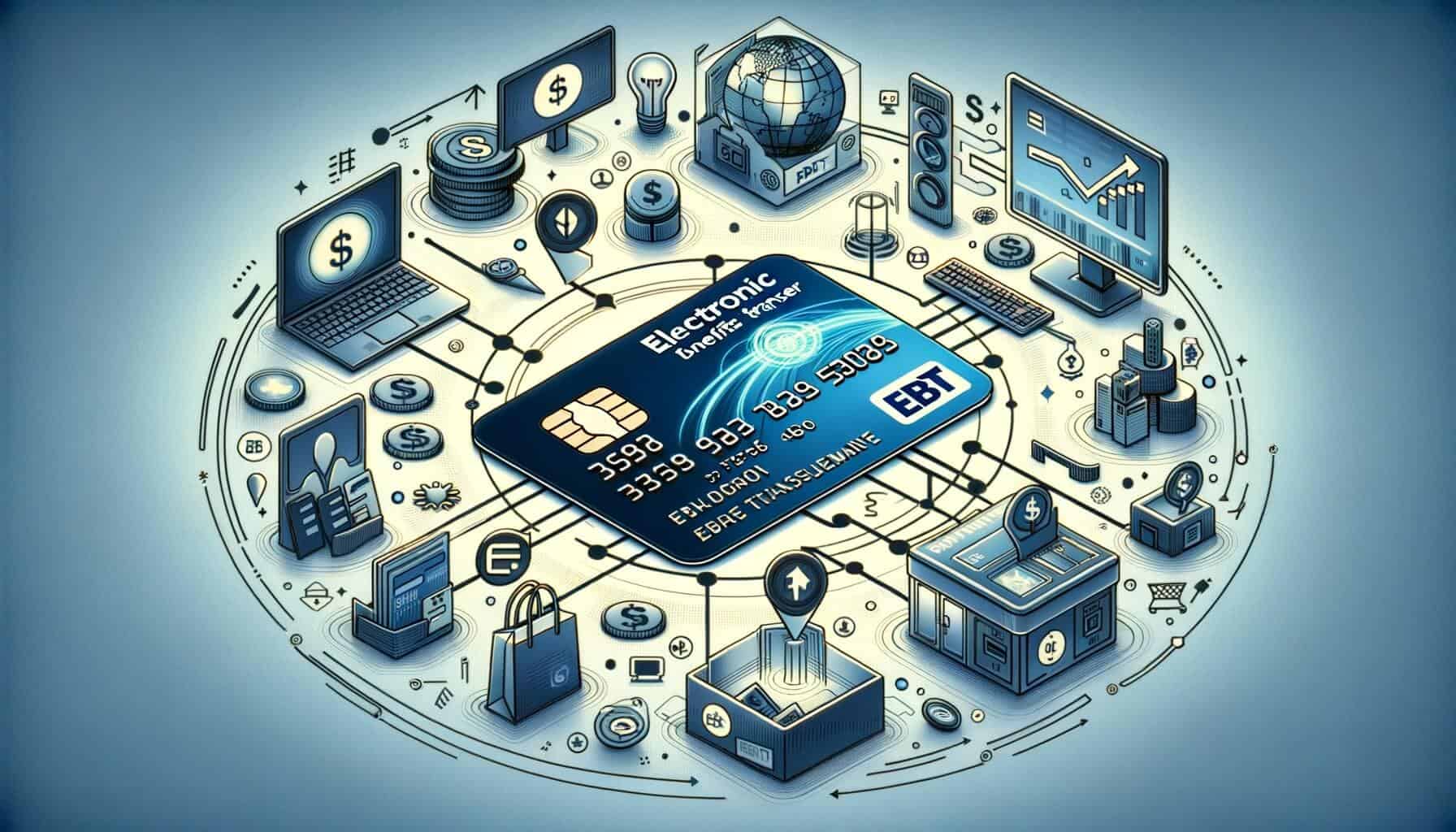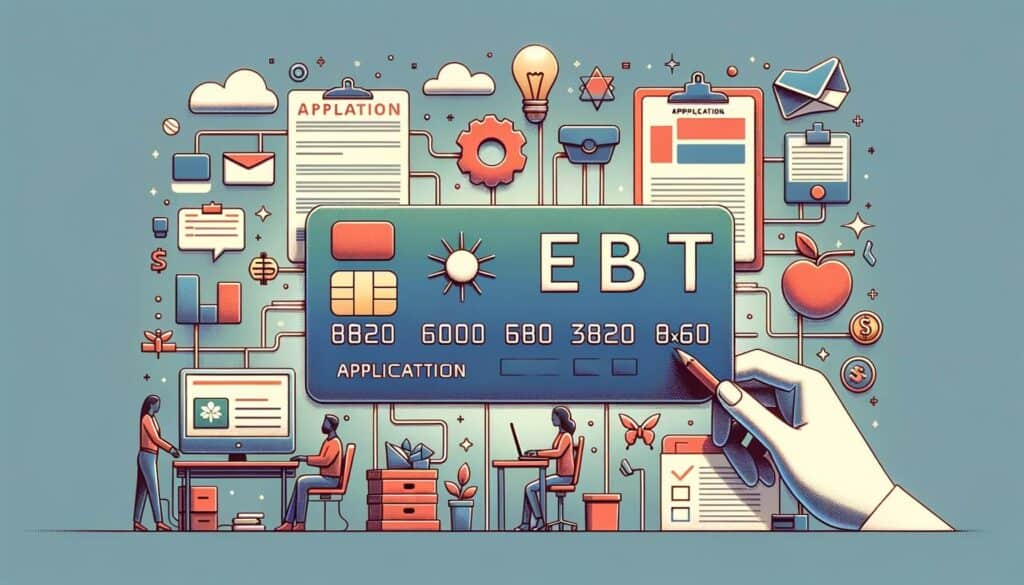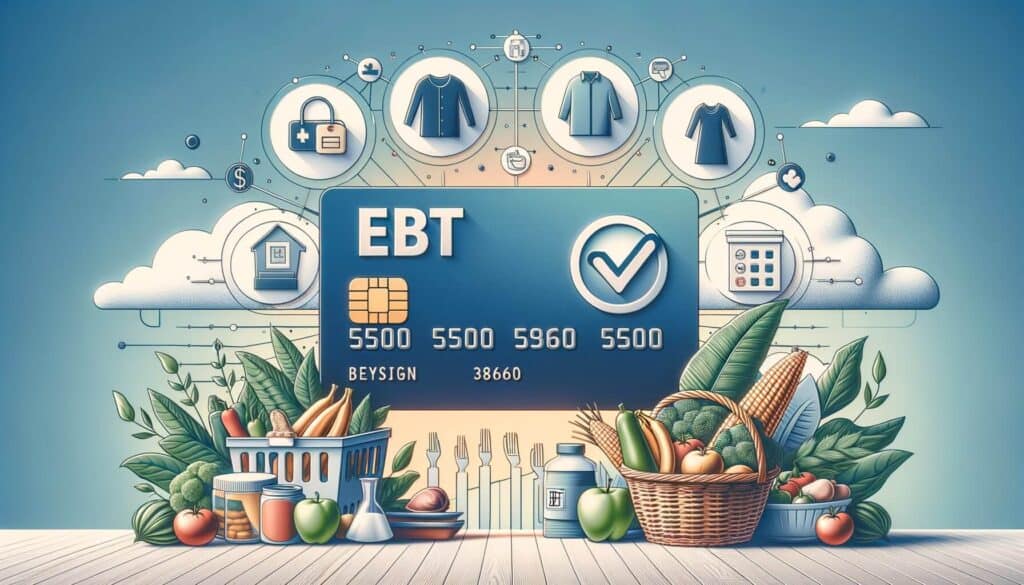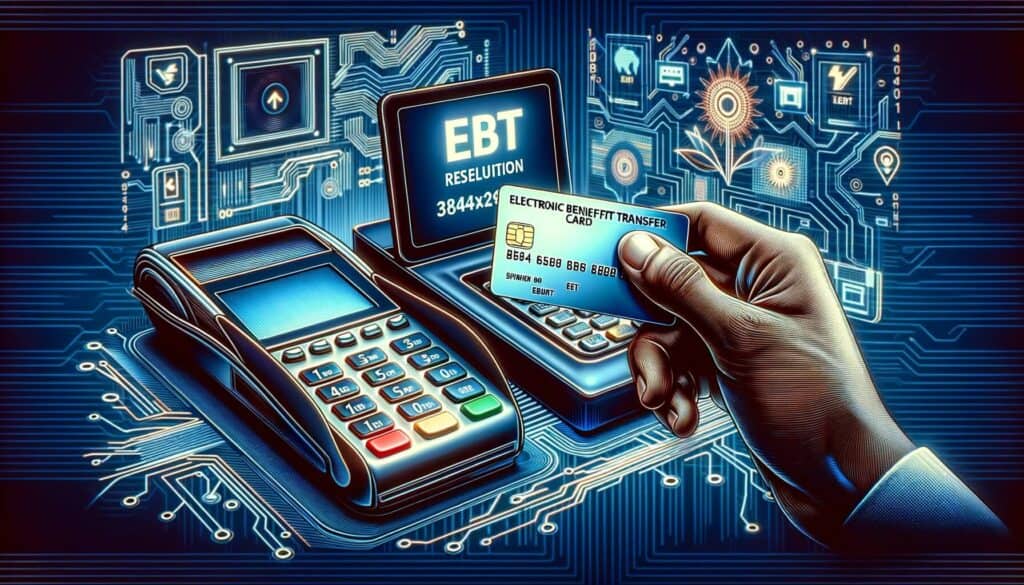
By Sharon Watson April 10, 2025
In today’s society, many individuals and families struggle to make ends meet and put food on the table. To address this issue, the United States government has implemented a program called the Supplemental Nutrition Assistance Program (SNAP), which provides assistance to low-income individuals and families to purchase nutritious food.
One of the key components of this program is the Electronic Benefit Transfer (EBT) card, which functions as a modern alternative to traditional paper food stamps. In this comprehensive guide, we will explore how an EBT card works, including eligibility criteria, the application process, benefits, usage, restrictions, managing funds, renewal and replacement, fraud prevention, and frequently asked questions.
Eligibility Criteria for EBT Cards: Who qualifies for assistance?

Before diving into the details of how an Electronic Benefit Transfer (EBT) works, it is important to understand who qualifies for this form of assistance. The eligibility criteria for EBT cards are determined by the SNAP program and vary from state to state.
Generally, individuals and families with low income and limited resources are eligible for SNAP benefits. Income limits are set at 130% of the federal poverty level, but certain deductions and exemptions may apply.
Additionally, individuals must be U.S. citizens or qualified non-citizens to qualify for SNAP benefits. It is crucial to check the specific eligibility requirements in your state to determine if you qualify for an Electronic Benefit Transfer (EBT).
Applying for an EBT Card: Step-by-step guide to the application process

Once you have determined your eligibility for an Electronic Benefit Transfer (EBT), the next step is to apply for the program. The application process may vary slightly from state to state, but the general steps remain the same.
Firstly, you will need to gather the necessary documentation, such as proof of identity, income, and residency. This may include documents such as a driver’s license, Social Security card, pay stubs, and utility bills. Once you have gathered all the required documents, you can submit your application either online, by mail, or in person at your local SNAP office.
It is important to provide accurate and complete information to ensure a smooth application process. After submitting your application, it will be reviewed by the SNAP office, and if approved, you will receive your EBT card in the mail.
Understanding EBT Card Benefits: What can be purchased with an EBT card?

Now that you have received your Electronic Benefit Transfer (EBT) Card, it is essential to understand what you can purchase with it. The primary purpose of an Electronic Benefit Transfer (EBT) is to provide assistance for purchasing nutritious food. Therefore, you can use your EBT card to buy a wide range of food items, including fruits, vegetables, meat, dairy products, bread, and cereals.
However, it is important to note that EBT cards cannot be used to purchase non-food items such as alcohol, tobacco, pet food, vitamins, and hot prepared foods. Each state may have specific guidelines and restrictions on what can be purchased with an Electronic Benefit Transfer (EBT), so it is advisable to familiarize yourself with the rules in your state.
How to Use an Electronic Benefit Transfer (EBT) Card: A comprehensive guide to using the card at authorized retailers

Using an Electronic Benefit Transfer (EBT) card is relatively straightforward, but it is essential to understand the process to ensure a smooth transaction. Firstly, you need to locate authorized retailers that accept EBT cards. These retailers include grocery stores, supermarkets, farmers markets, and some online retailers.
Once you have found an authorized retailer, you can proceed to the checkout counter with your selected items. Inform the cashier that you will be using an Electronic Benefit Transfer (EBT) card for payment. The cashier will then swipe your EBT card through the electronic card reader and ask you to enter your Personal Identification Number (PIN). It is crucial to keep your PIN confidential to prevent unauthorized use of your Electronic Benefit Transfer (EBT) card.
After entering your PIN, the transaction will be processed, and the total amount will be deducted from your EBT card balance. It is important to keep track of your remaining balance to ensure you do not exceed your available funds.
Electronic Benefit Transfer (EBT) Card Restrictions: What items cannot be purchased with an EBT card?
While EBT cards provide essential assistance for purchasing nutritious food, there are certain restrictions on what can be purchased with these cards. As mentioned earlier, Electronic Benefit Transfer (EBT) cards cannot be used to buy non-food items such as alcohol, tobacco, pet food, vitamins, and hot prepared foods.
Additionally, EBT cards cannot be used to purchase items that are not intended for human consumption, such as cleaning products, toiletries, and household supplies. These restrictions are in place to ensure that SNAP benefits are used solely for their intended purpose of providing nutritious food for individuals and families in need. It is important to familiarize yourself with the specific restrictions in your state to avoid any misuse of your Electronic Benefit Transfer (EBT) card.
Managing EBT Card Funds: Tips for budgeting and tracking expenses
Managing your Electronic Benefit Transfer (EBT) card funds effectively is crucial to ensure that you can meet your nutritional needs throughout the month. Here are some tips for budgeting and tracking your expenses:
1. Plan your meals: Create a weekly or monthly meal plan to help you make informed decisions about your food purchases. This will prevent impulse buying and ensure that you have enough food to last until your next benefit issuance.
2. Make a shopping list: Before heading to the grocery store, make a list of the items you need. Stick to your list to avoid unnecessary purchases and stay within your budget.
3. Compare prices: Compare prices at different stores to find the best deals. Consider shopping at discount stores or farmers markets to stretch your EBT card funds further.
4. Use coupons and discounts: Take advantage of coupons and discounts to save money on your purchases. Many stores offer special deals for EBT cardholders, so be sure to inquire about any available discounts.
5. Keep track of your expenses: Keep a record of your Electronic Benefit Transfer (EBT) card transactions to monitor your spending. This will help you identify any patterns or areas where you can cut back to make your benefits last longer.
EBT Card Renewal and Replacement: What to do when your card expires or is lost
EBT cards have an expiration date, typically ranging from two to five years, depending on the state. It is important to keep track of the expiration date and initiate the renewal process in a timely manner. To renew your Electronic Benefit Transfer (EBT) card, you will need to contact your local SNAP office or visit their website to complete the necessary paperwork. The renewal process may require you to provide updated documentation, such as proof of income and residency. It is crucial to submit your renewal application before your current card expires to avoid any disruption in benefits.
In the unfortunate event that your EBT card is lost or stolen, it is important to take immediate action to protect your benefits. Contact your local SNAP office or the EBT customer service hotline to report the loss or theft. They will deactivate your old card and issue a replacement card. It is important to keep your Electronic Benefit Transfer (EBT) card in a safe place and treat it like cash to prevent any unauthorized use.
EBT Card Fraud and Abuse: How to protect yourself and report suspicious activity
EBT card fraud and abuse can have serious consequences, not only for the individuals involved but also for the integrity of the SNAP program. It is important to be vigilant and take steps to protect yourself from fraud. Here are some tips to safeguard your Electronic Benefit Transfer (EBT) card:
1. Keep your PIN confidential: Do not share your PIN with anyone, including friends or family members. Memorize your PIN and avoid writing it down or storing it in your phone.
2. Check your balance regularly: Keep track of your Electronic Benefit Transfer (EBT) card balance and review your transaction history frequently. Report any unauthorized transactions or discrepancies to your local SNAP office immediately.
3. Be cautious of phishing attempts: Be wary of unsolicited calls, emails, or text messages asking for your EBT card information. Legitimate organizations will never ask for your PIN or personal information over the phone or through email.
4. Report suspicious activity: If you suspect any fraudulent activity or abuse of the SNAP program, report it to your local SNAP office or the SNAP fraud hotline. Your report can help prevent further misuse of benefits and protect the integrity of the program.
Frequently Asked Questions (FAQs) about EBT Cards: Common queries and their answers
1. Can I use my EBT card in other states?
Yes, EBT cards can be used in any state that accepts SNAP benefits. However, it is important to note that certain states may have different rules and restrictions on what can be purchased with an EBT card.
2. Can I withdraw cash from my EBT card?
Yes, you can withdraw cash from your EBT card at participating ATMs. However, it is important to note that there may be fees associated with cash withdrawals, and the amount you can withdraw may be limited.
3. Can I use my EBT card to buy groceries online?
Yes, many states now allow EBT cardholders to purchase groceries online through approved retailers. This option provides convenience and accessibility for individuals who may have difficulty accessing physical stores.
4. Can I sell or trade my EBT card benefits?
No, it is illegal to sell or trade your EBT card benefits. SNAP benefits are intended solely for the purchase of nutritious food for eligible individuals and families. Engaging in fraudulent activities can result in severe penalties, including loss of benefits and legal consequences.
5. Can I use my EBT card at fast food restaurants?
In certain states, EBT cards can be used at approved fast food restaurants that participate in the Restaurant Meals Program. This program is designed to provide access to hot meals for homeless, elderly, and disabled individuals who may not have access to cooking facilities.
Conclusion
The Electronic Benefit Transfer (EBT) card is a vital tool in the Supplemental Nutrition Assistance Program (SNAP) that provides assistance to low-income individuals and families to purchase nutritious food.
Understanding how an EBT card works, including eligibility criteria, the application process, benefits, usage, restrictions, managing funds, renewal and replacement, fraud prevention, and frequently asked questions, is crucial for individuals who rely on this program for their nutritional needs.
By following the guidelines and tips provided in this comprehensive guide, individuals can make the most of their EBT card benefits and ensure a healthier and more secure future.